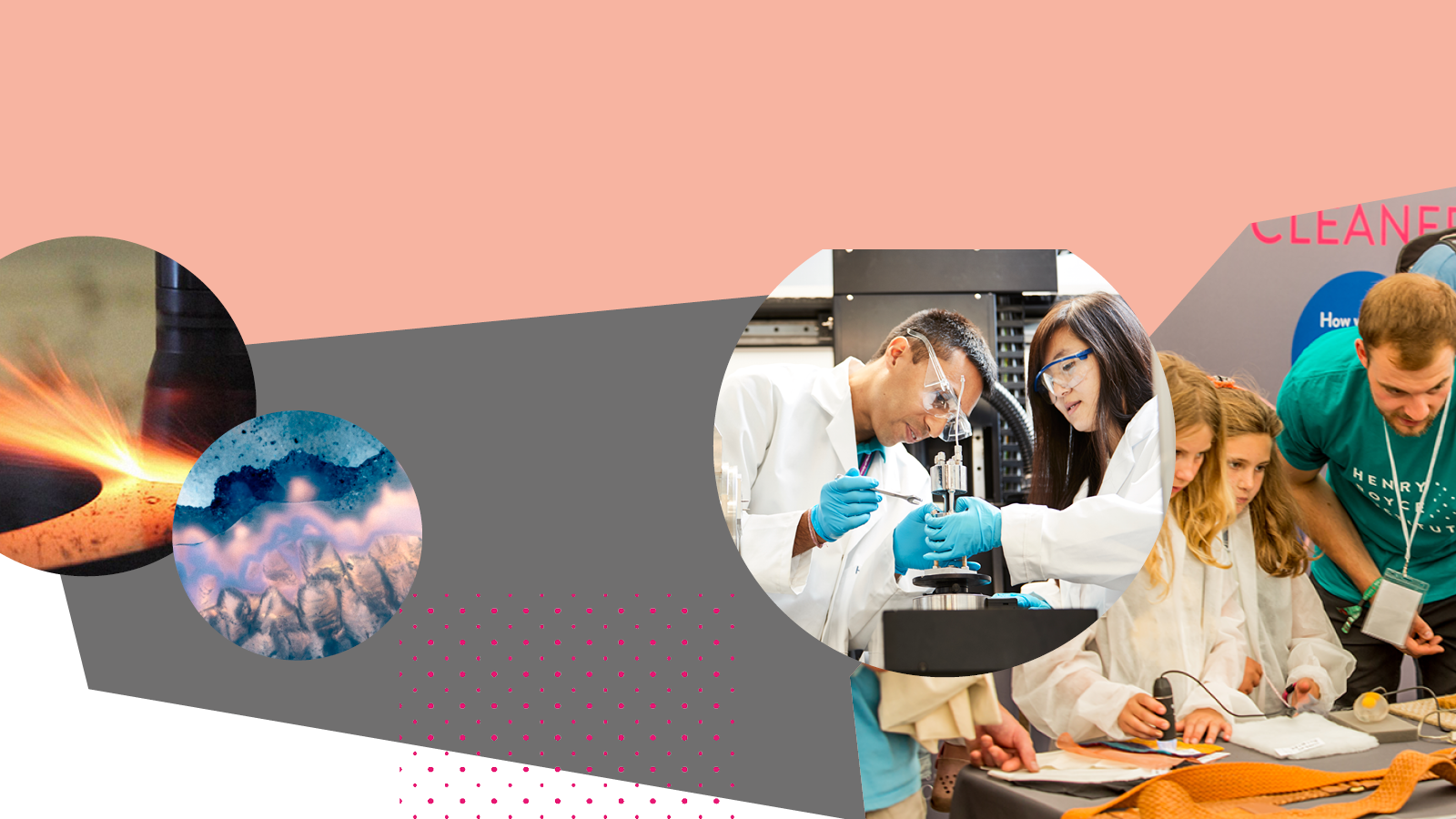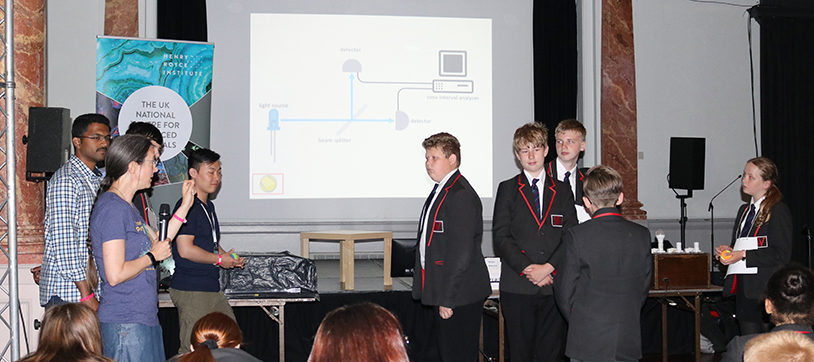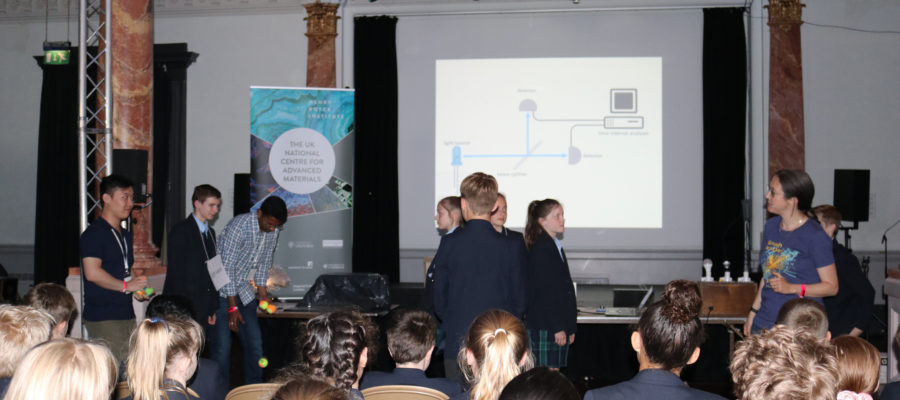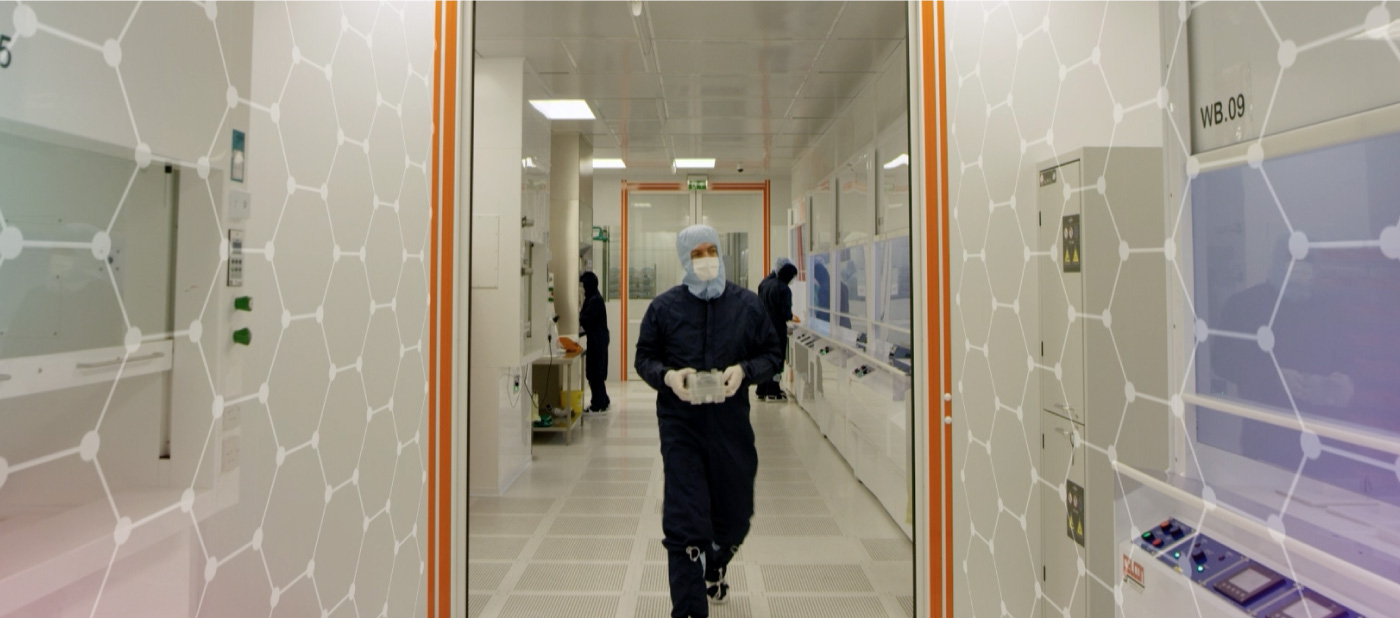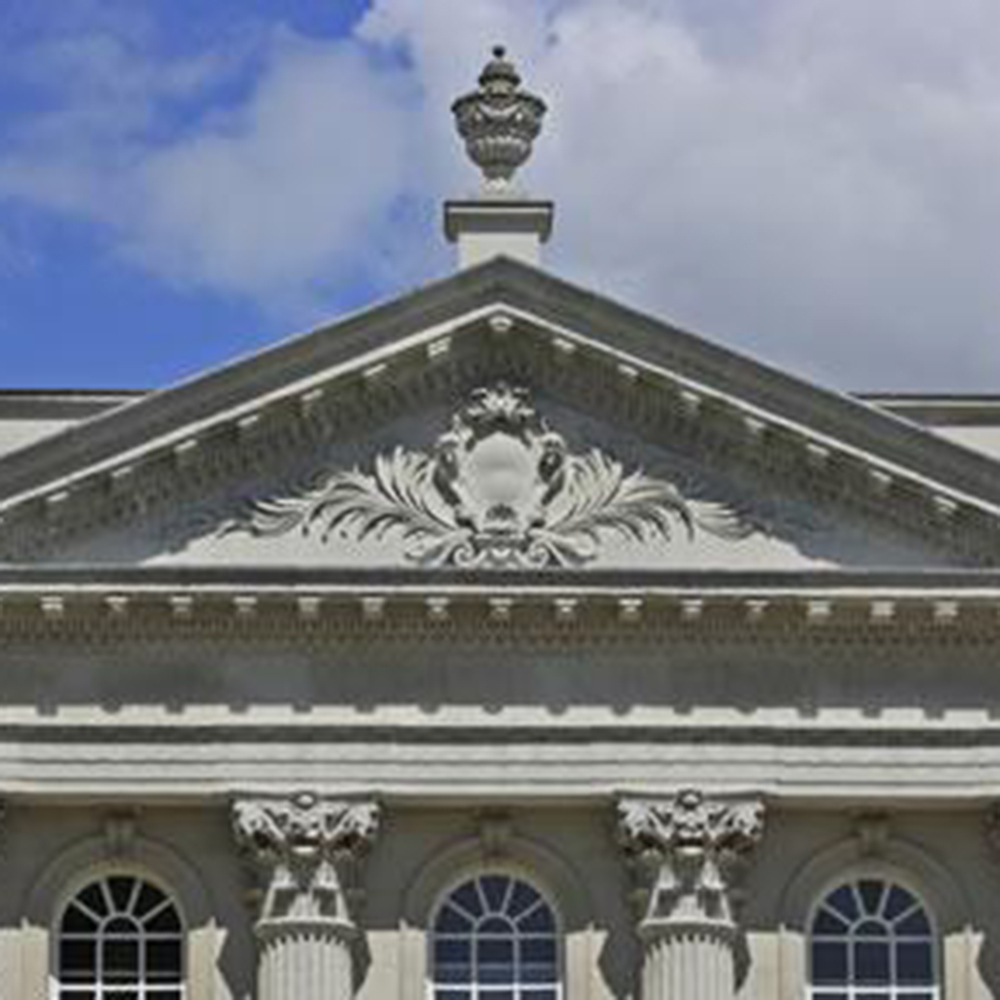Today we see Gallium Nitride (GaN) in as an essential material for energy efficient lighting. But it also has amazing applications in communications and there is still research before GaN becomes a mainstay of fast, efficient, low energy data transfer using the medium of light.
On Wednesday 5th June colleagues from across the Royce headed to Cheltenham Science Festival to deliver a workshop on Illuminating Communications to over 100 KS3 students.
The workshop led by Rachel Oliver (Professor of Materials Science at the University of Cambridge) alongside Boning Ding and Abhiram Gundimeda (PhD students at the Cambridge Centre for Gallium Nitride) explored light communications from past, present to future.
Pupils from local schools uncovered the historical uses of light communications from beacons to lighthouses. In 1588 England reaped the benefits of optical telegraphy when beacons were lit to inform of the encroaching Spanish Armada sighted off the south coast of Devon with the message traveling to York in around 12 hours.
Moving forward in time to present day, the workshop explored somewhat faster modes of communication using light signals to transmit data through optical fibres, a technology which is enabling fast broadband internet connections. Our WiFi internet may soon be replaced or supplemented by GaN-based “LiFi”, using our general lighting to transmit data!
Prof Oliver presented the complex principle of wave-particle duality demonstrating that light behaves simultaneously as a particle and a wave. The particle-like behaviour was demonstrated using members of the audience and tennis balls showing that single photon (tennis ball), passing through a beam splitter, cannot be detected simultaneously by two detectors. The wave-like nature of light was demonstrated by shining a beam of laser light through a series of slits (diffraction grating) and the resultant diffraction pattern could be seen on the wall.
Future of light communications
But what next? What does the future hold for light communications? – Prof Oliver explored her own research into Single Photon Sources that may revolutionise how we send information securely. This concept relies on the ability to emit exactly one fundamental particle of light encoded with data.
The workshop stripped quantum cryptography back to basics with tennis balls acting as data wrapped in foil ‘encryption’. Wrapped tennis balls were sent from one pupil to another who unwrapped the foil to read the data. However, if the data was intercepted by another pupil (hacked) and the foil unwrapped before its intended destination, it was clear the data had been tampered with.
Following the workshop Prof Oliver commented:
‘My work in the lab is intrinsically interdisciplinary research and involves collaboration across numerous fields. This physics based workshop demonstrated the multifaceted nature of materials science and we hope to excite children about different STEM subjects from a young age’.
Dr Chris Hamlett, National Outreach Officer for the Henry Royce Institute & Discover Materials Network said:
‘It was great to watch such complex ideas be taken in by such a young audience. Their enthusiasm and insightful questions was refreshing and demonstrates the future of materials science and engineering is in safe hands!’
The University of Cambridge leads the Materials for Energy Efficient ICT for the Henry Royce Institute. Click here to find out more about our research into energy generation, storage, and use.
The Cambridge Centre for Gallium Nitride conducts world-leading research into nitride based III-V semiconductors: material quality, characterisation, and device development. Visit their website here to find out more about their research and to access learning materials.
